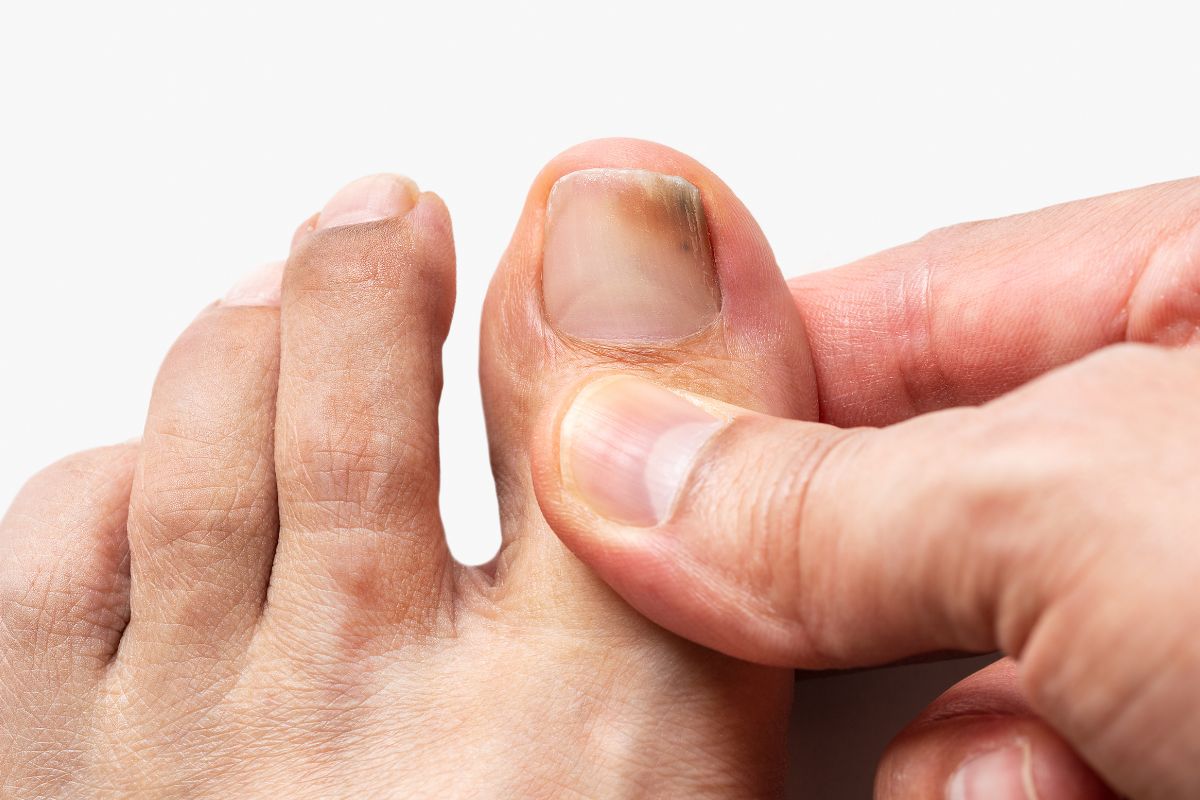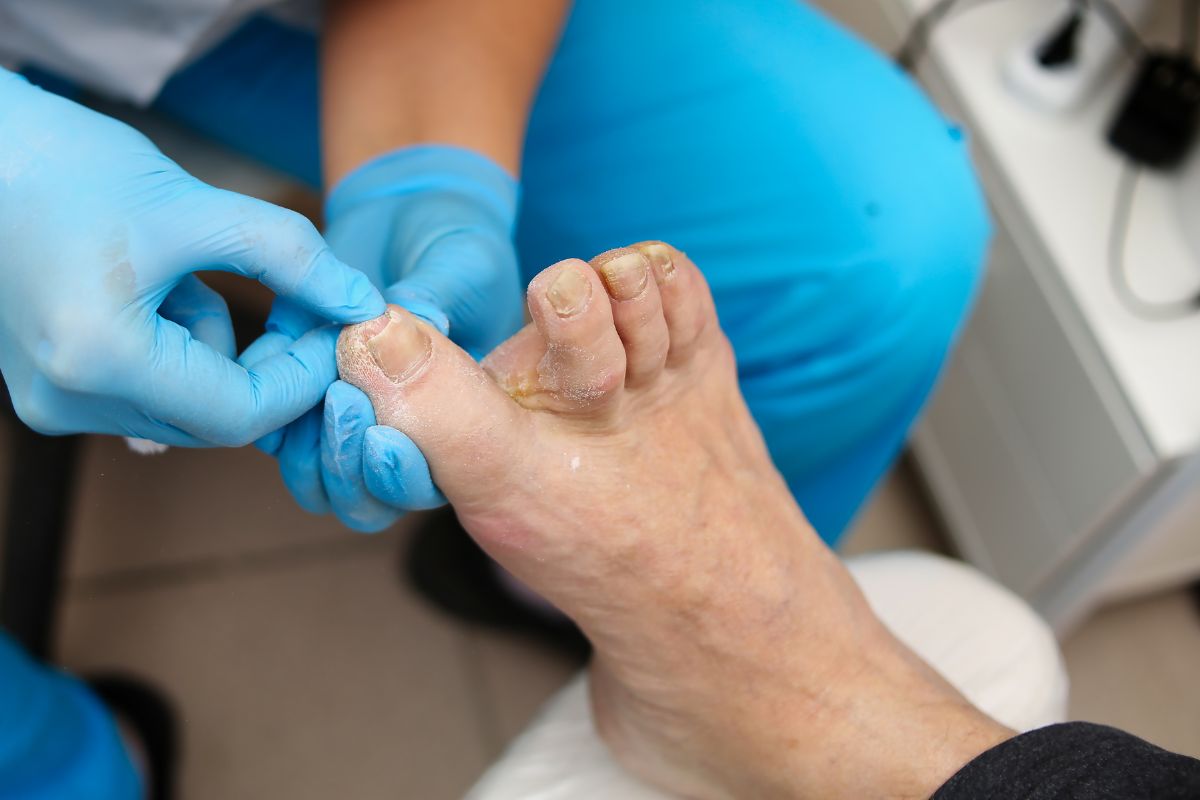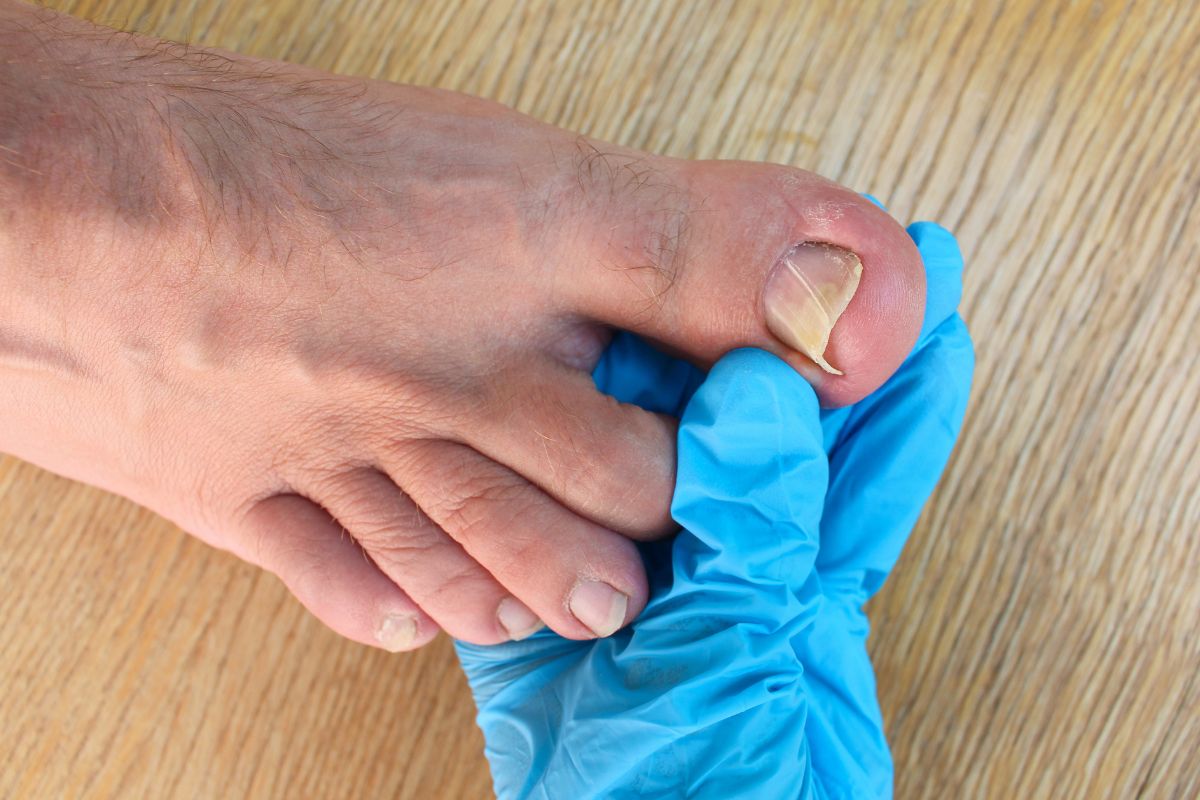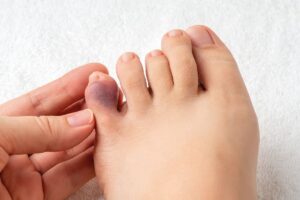Your toenails are there to help protect the pointed parts of your toe bones by providing an armor-like layer. As much as they are made of tough material, they can still get damaged, which can be quite painful and uncomfortable.
The good news is that damaged toenails heal and grow back most of the time. However, you need to address your injured nail while it is still vulnerable. Here’s what you should know.

Signs of a Damaged Toenail
Say you bang your toenail on the corner of a hardwood table, or you have something hard and heavy fall on it.
How do you know your nail is damaged? The first thing to do is to check its appearance. Look for discoloration such as a dark or red spot. This is the least alarming symptom, but if the discoloration covers the majority of the nail, then you should consider going to a podiatrist.
You should also look out for bleeding, lifted parts, thickening nail, or torn areas. These need more care and may even require a doctor’s attention.
Tips for Taking Care of a Damaged Toenail
- Remove Sharp Edges
If the situation is manageable, you should trim the nail and smoothen it out to avoid sharp edges from further damaging the area. Just make sure to avoid aggravating the situation by trimming too deep.
You can also consider cutting off lifted or torn nails, as long as it does not worsen the injury. Then, clean the resulting wound.
- Apply Bandage
Nails offer protection, so you should make sure that your nail beds are protected as well. Applying a bandage is essential to minimize the possibility of infections.
After cleaning the damaged toenail, should cover it with a fresh layer of bandage or gauze and keep it away from moisture. You might also want to apply antimicrobial cream to help with the healing.
- Keep the Nailbed Clear
As mentioned, your nails will likely grow back, as long as the damage does not affect the nail bed or the nail matrix. So, while you should cover it with a bandage or gauze, you need to keep it loose enough to allow for growth.
This is also important because any obstructions can tear the nail bed, thus creating more damage in the long run.

- Consider Any Health Problems
Home remedies are possible for damaged toenails, but you should remember that there are cases that require professional help such as serious bleeding and deeper damage.
This also includes health considerations such as diseases that can exacerbate the problem such as diabetes and immune system issues. Do not perform any drastic measures such as removal or trimming in order to minimize potential issues.
The Bottom Line
Your toenails are some of the most resilient parts of your body, but they can fall victim to injuries for different reasons. If you happen to damage your toenail you are not capable of addressing the problem, your best bet is to go to a licensed podiatrist near you.





